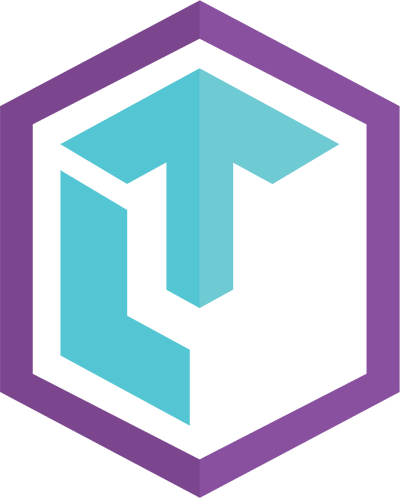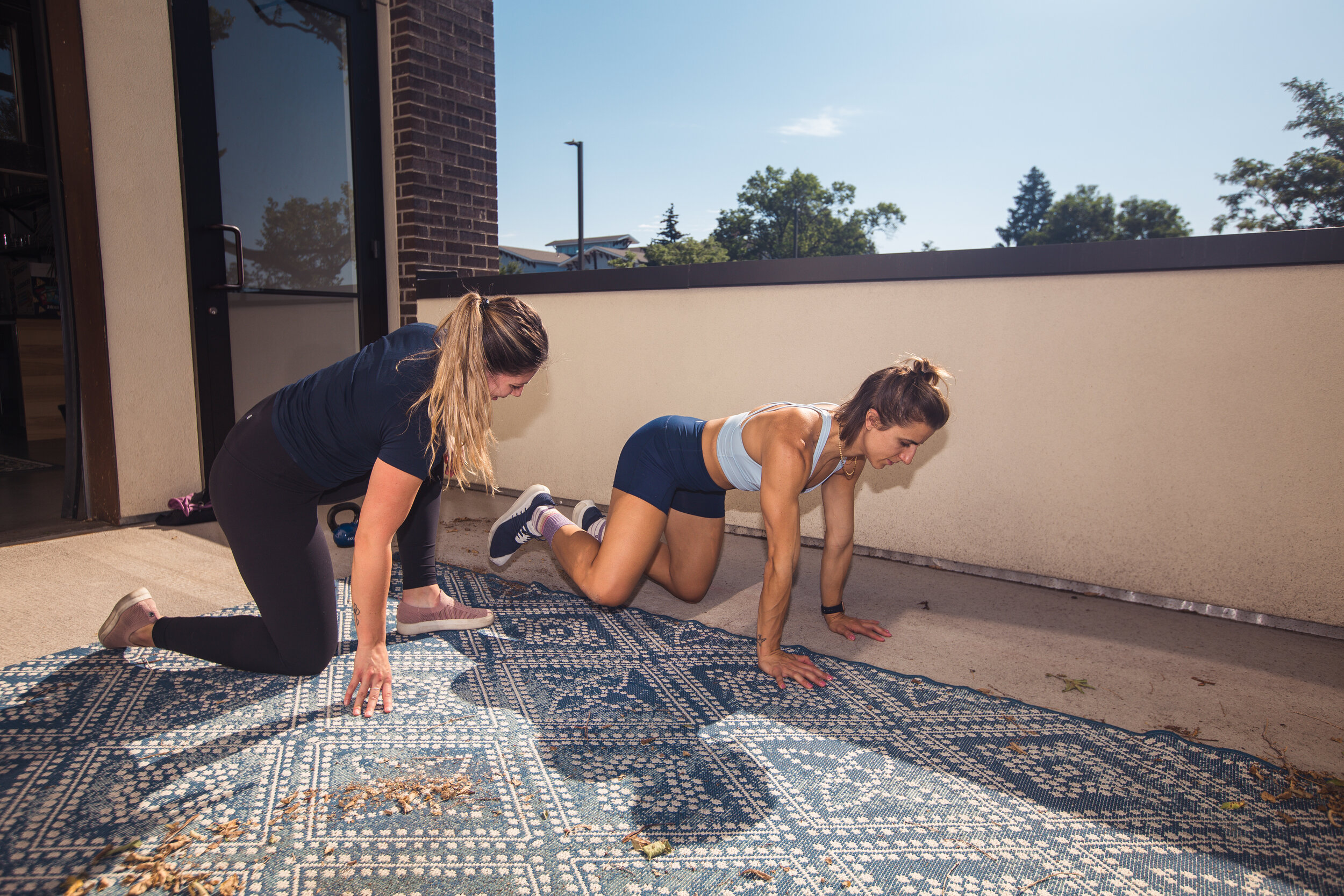Engage Your "Core"
ENGAGE YOUR CORE!
But what does that actually mean? While yes, bracing your midsection like someone is about to punch you is a very great analogy, there’s a lot more to it. And I brought in local Denver Physical Therapist, Hayley Nick from Well Set to go over all of this together.
Core muscles just aren’t “ab muscles” - they wrap around the midsection to protect and stabilize the spine. When these muscles are strong and engaged they are able to support the joints of the spine during exercise and even just when you are sitting at your desk at work. Primarily the muscles that aid in relieving and preventing low back pain are the transversus abdominis, lumbar multifidus, internal oblique muscle and quadratus lumborum.
PART 1:
The transversus abdominis and lumbar multifidus muscles connect each lumbar vertebrae together and provide strong support on the lumbar facet joints and influence the neutral lumbar curve that we all strive for.
Exercise: Quadruped Knee Raise
Start on all fours in the tabletop position. Maintain neutral spine. Slowly lift your knee from the floor. Your thigh and hip should move straight up. Hold this position for 2 to 3 seconds then slowly lower your knee back to the floor. Your foot stays in contact with the floor during the exercise. Perform 10 to 20 repetitions on each side.
Spread your fingers out wide and press through your palms. Keep your shoulders stacked over your wrists. Be aware of your low back arching as your bring your knee up towards the ceiling. Stop at hip height.
PART 2:
The internal oblique and quadratus lumborum are bigger muscles that attach the pelvis to the thoracic spine and lower extremities. These muscles are more involved in the protection of the spine from the outside in, like different compound workout movements and jumping exercises.
Exercise: Weighted Windmill
Start in a standing position with feet shoulder width apart and arms out in a “T”, light weight in one hand. Begin the exercise by slowly reaching with the unweighted arms towards the same side leg, engage QL and internal oblique when returning to the starting position. Perform 10 to 20 repetitions on each side.
Point your toe out to the side as you reach down towards that foot with the unweighted foot. Keep your gaze on your hand with the weight. Send your weighted side hip slightly out to the side as you hinge.
PART 3:
Glute strength is really important for movements that involve extension (opening up) of the hips. When glute activation is lacking other muscles like your hip flexors and lumbar paraspinals have to work harder to facilitate power from the hips. A great way to make glute activation more efficient is to enhance the mind muscle connection through targeted exercises like a glute bridge. This exercise is also great to do prior to exercise as a warm up.
Exercise: Glute Bridge
Start by laying on your back- keep a small space between your lumbar spine and ground. With knees bent and palms of hands on the ground at your sides act like a string is attached to your pelvis and on the inhale of your breath, drive through heels while engaging glutes and lift pelvis towards the ceiling. Hold position at the top of a few seconds and then return to starting position.
PART 4:
This exercise focuses on strengthening thoracic and lumbar rotation along with superficial core like the external obliques. The axe chop is a functional movement which translates into physical activity throughout your everyday life. Performing exercises that mimic everyday movement allow you to build strength and prevent injury in different ideas of the body, and in this case, the lower back.
Exercise: Band Axe Chop
Put a longer resistance band on something that’s not going to move (or have a buddy hold it for you). Make sure your toes are pointing forward and one of your shoulders is towards the wall (or your buddy). Keep your shoulders away from your ears and hold the band right in front of your chest. Twist from your torso as you bring the band out to the side. Slowly release the band back to the center.
We work on activating and engaging your core in every TL Method workout. Join us for a totally FREE first week. All of the workouts are super minimal equipment and can be done by yourself from home.









